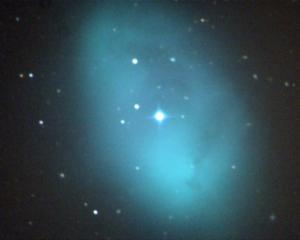
While looking at the sun is incredibly dangerous if you don’t know what you are doing, it is possible to purchase special telescopes that allow safe solar viewing. These telescopes reveal exceptional detail on and above the solar surface. Solar observing can be quite addictive, and I must confess to spending many happy hours gawping at the sun when the weather is good.
I’m a particular fan of sunspots, which are magnetically confined areas of cool gas that look dark against the usually bright solar disk. A giant sunspot is a joy to behold; its dark umbra is surrounded by a less dark penumbra, with both regions full of fascinating structures changing by the minute.
Having extolled the virtues of sunspots, I have to say that the past few years have been a tiny bit dull for observers of our nearest star.
In 2019, its surface was devoid of spots on 281 days (that’s 77% of the year!). So far, in 2020, the sun has been spotless for more than 200 days.
The number of spots visible on the solar surface is a measure of solar activity, which varies in an 11-year cycle. Expert solar physicists have calculated that a minimum in solar activity occurred in December 2019, which means that more spots should start to become visible over the next few years as we approach the next solar maximum, which should occur sometime in 2025.
An approaching solar maximum is excellent news not just for sunspot fans, but also for aurora chasers. That’s because the number of auroras we see strongly correlates with solar activity.
After a long run of cloudy weather last weekend, I managed to turn my telescopes sunwards. Imagine my joy when I saw several sunspots, one of which was much larger than Earth. I quickly attached my camera to the telescope and shot pictures of the whole solar disk and some close-up views of the largest sunspot.
Bring on solar maximum!
- Ian Griffin











